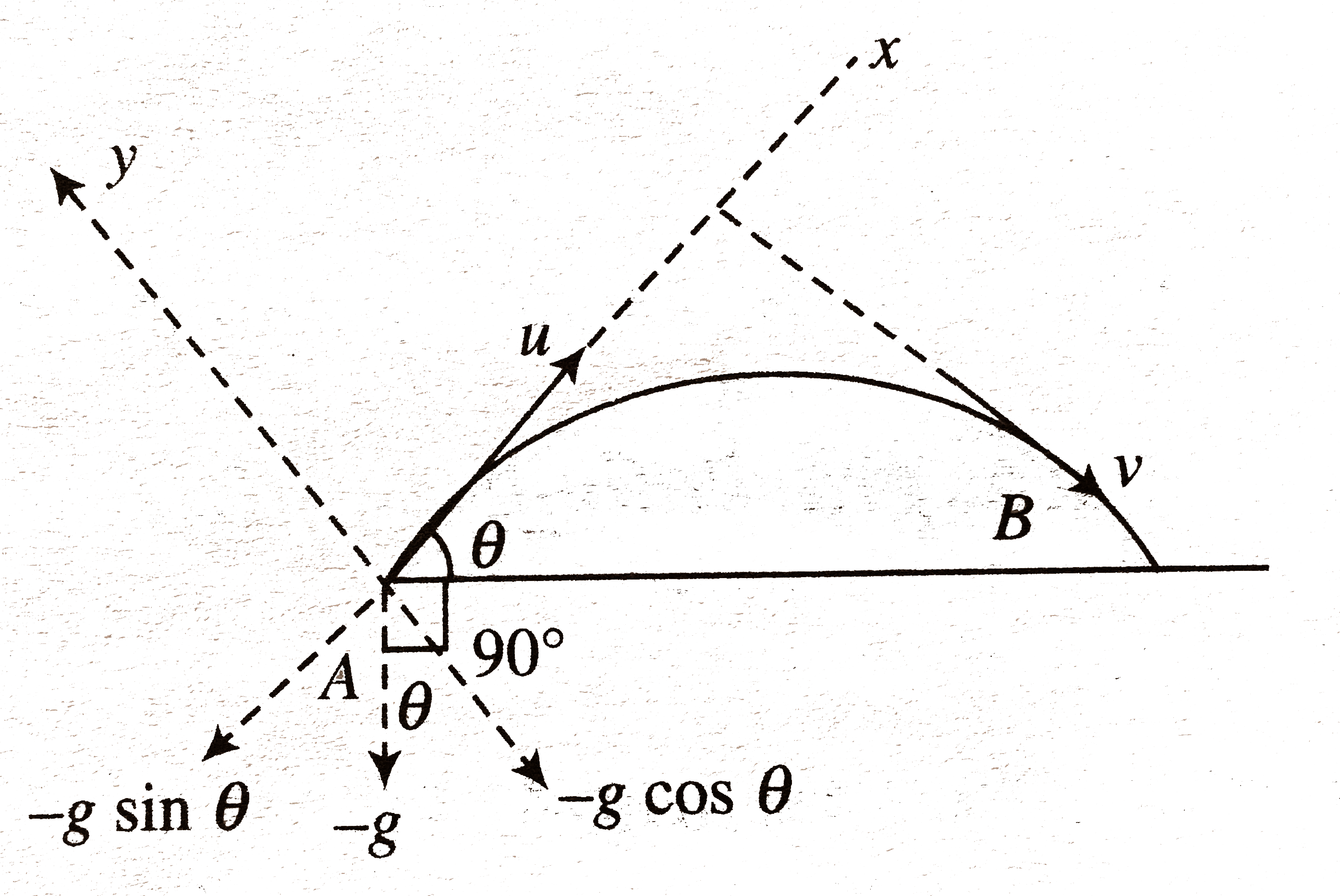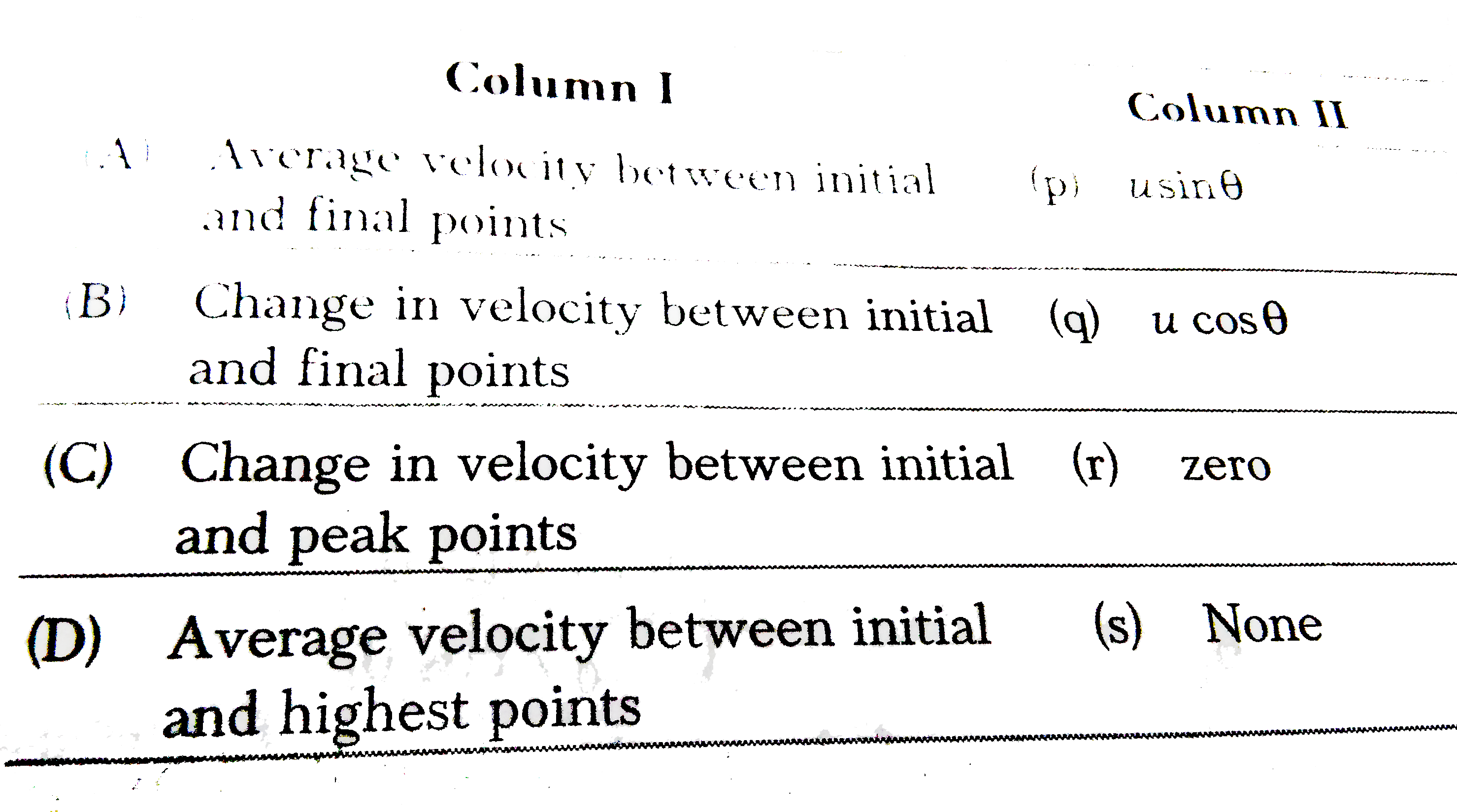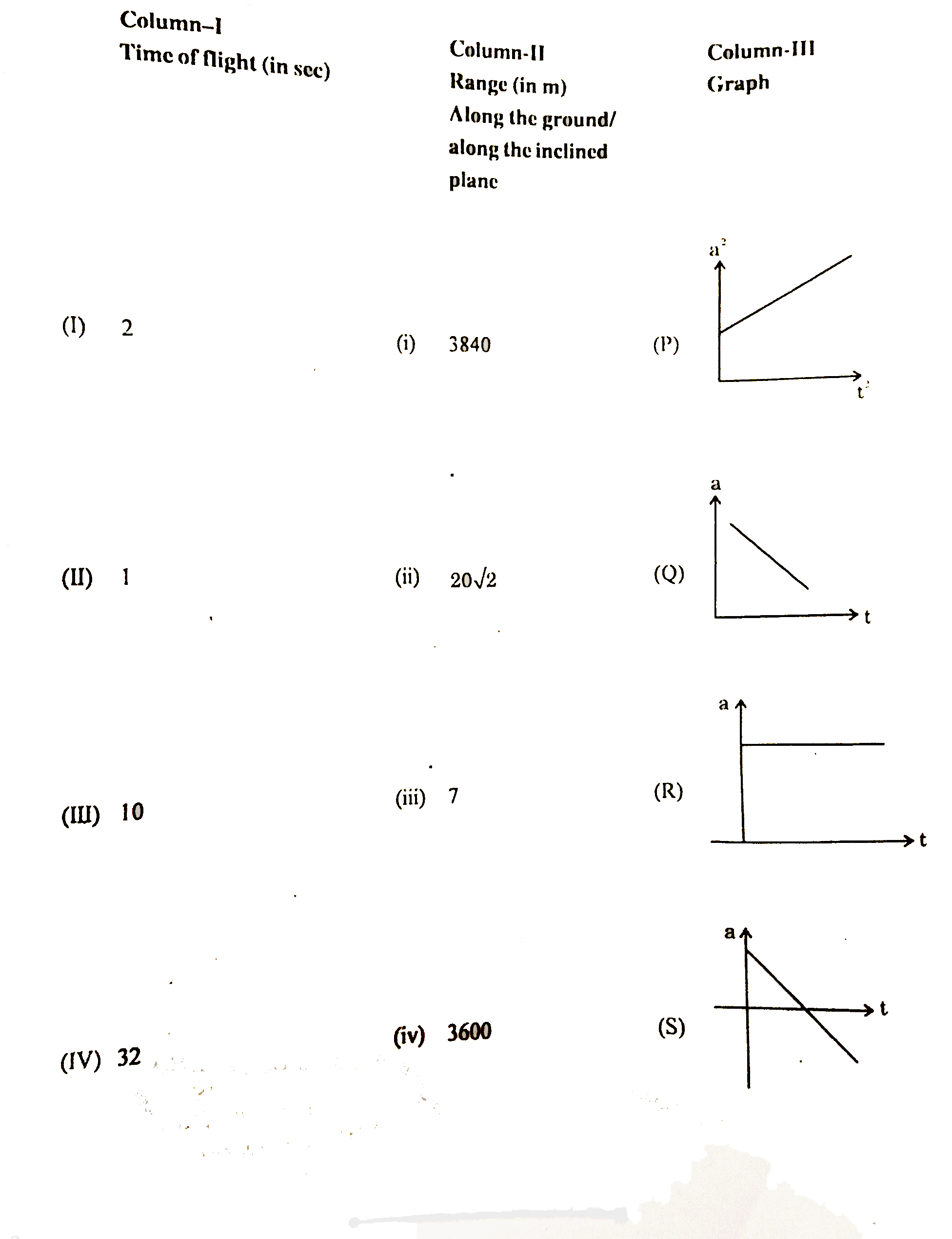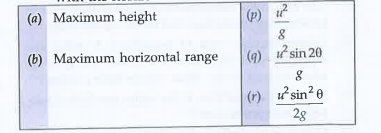A particle is projected with velocity u at angle θ with horizontal. Find the time when velocity vector is perpendicular to initial velocity vector.
Method 1 : Using properties of projectile motion
As we have to calculate the time between two positions AandB where the final direction of movement is perpendicular to the initial direction of movement. So for our own comfortability, we can choose the initial direction of motion as x - axis. Also let us assume the velocity at position B to be v.
Now analyzing motion in x - and y - direction, we have
ux=u,uy=0
ax=−gsinθ,ay=−gcosθ
Here we can the following formula v=u+at in x - direction.
As we have the values of initial velocity, final velocity, and acceleration we can find t. Therefore,
vx=ux+axt
At position B,vx=0, as the fianl velocity is equal to the y - component of velocity. Therefore,
0=u−gsinθ.t
Thus, t=ugsinθ which is the required time to travel.
Method 2 : Using vectors
As uandv both are perpendicular to each other. We can use the orthogonality property of dot product, i.,e., if two vetor are perpendicular to each other their dot product is zero, in order to find out the time of travel to the desired position. So,
so, →u.→v=0⇒→u.(→u+→at)=0⇒→u.→u+→u.→at=0
⇒u2+ugcos(90∘+θ)t=0
[because angle between u and gis90∘+θ as from (Fig)]

u2+u.g(−sinθ)t=0.t=0
So, t=ugsinθ is the desired time.
To find out the velocity we can use the same relation as used in this question. But as at final position (considered) only the y - component of velocity is present, so we need to use the same relation in y - direction.
vy=uy+agt
⇒v=0−g.cosθt
=−gcosθugsinθ=−ucotθ is the velocity at position B.
.
Method 3 : If the initial velocity u and velocity at time t are perpendicular, then the final velocity will be at an angle θ with the vertical.
The horizontal component of velocity is unchanged throughout the motion . Therefore,
ucosθ=vsinθ
or v=ucotθ
THe vertical component of velocity after time t=−vcosθ.
From the equation, vy=usinθ−gt−vcosθ=usinθ−gt
t=usinθ+vcosθg=usinθ+ucotθcosθg
=ug[sin2θ+cos2θsinθ]=ugcosecθ
Method 4 : The slope of trajectory at the point of projection, m1=tanθ
Slope of trajectory after time t,
m2=dydx=dy/dtdx/dt=vyvx=usinθ−gtucosθ
Slopes are perpendicular, (usinθ−gtucosθ)(tanθ)=−1
or t=ugsinθ.
Topper's Solved these Questions
- KINEMATICS-2BOOK - CENGAGE PHYSICSCHAPTER - KINEMATICS-2EXERCISE - Solved Examples
7 Videos
- KINEMATICS-2BOOK - CENGAGE PHYSICSCHAPTER - KINEMATICS-2EXERCISE - Exercise 5.1
15 Videos
- KINEMATICS-1BOOK - CENGAGE PHYSICSCHAPTER - KINEMATICS-1EXERCISE - Integer
9 Videos
- KINETIC THEORY OF GASESBOOK - CENGAGE PHYSICSCHAPTER - KINETIC THEORY OF GASESEXERCISE - Compression
2 Videos
Similar Questions
Knowledge Check
A particle is projected with a velocity u making an angle θ with the horizontal. At any instant its velocity becomes v which is perpendicular to the initial velocity u. Then v is
AucosθButanθCusecθDucotθA particle is projected with velocity v at an angle of θ with horizontal. The average angular velocity of the particle from the point of projection to impact equals:
AgcosθθvBgvsinθCgvθDgθvsinθA particle is projected with velocity v at an angle θ aith horizontal. The average angle velocity of the particle from the point of projection to impact equals
AgcosθθvBgvsinθCgvθDgθvsinθ
A projectile is projected with velocity u making angle θ with horizontal direction, find : time of flight.
View SolutionA projectile is projected with velocity u making angle θ with horizontal direction, find : horizontal range.
View SolutionA particle is projected form ground with velocity u ar angle θ from horizontal. Match the following two columns.

View SolutionMatch the following

In groung to ground projection a particle is projected at 53∘ from horizontal. At t=25 sec after projection, its velocity vector becomes perpendicular to its initial velocity vector.
(Given →a=g⏐↓=10m/s2)
View SolutionA particle projected with velocity u at angle θ with horizontal at t=0. What is the magnitude of change in the velocity of the particle when it is at maximum height?
View Solution

